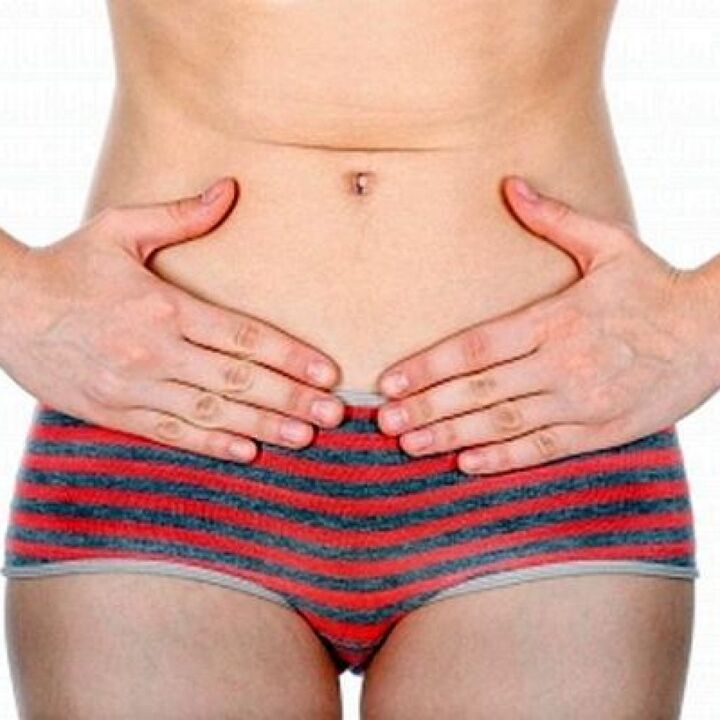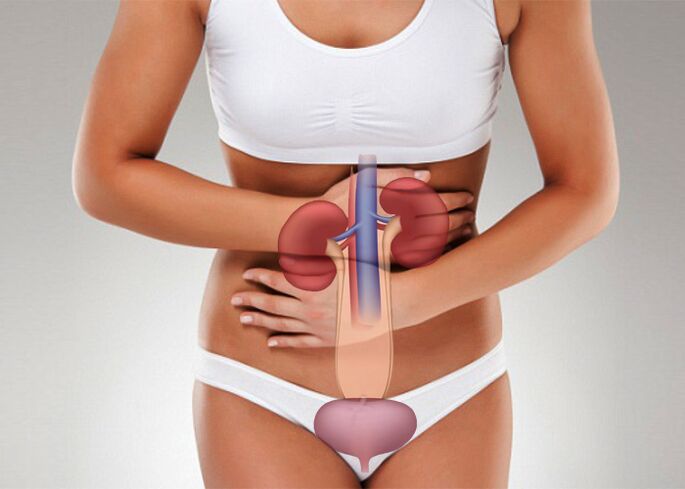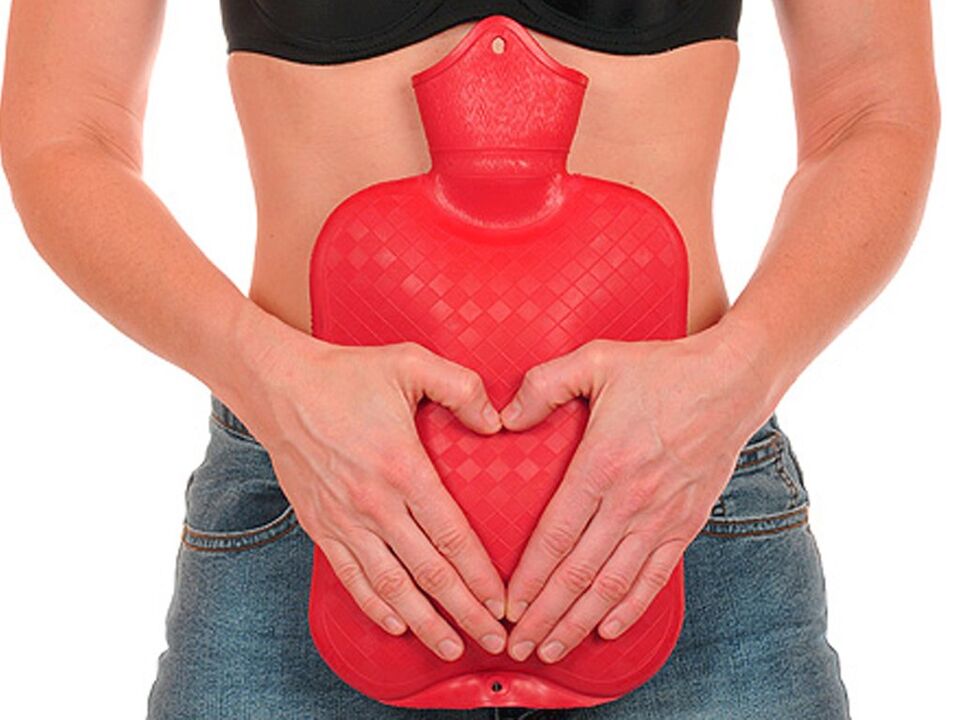In the urinary system, the bladder plays the role of a collector storage collector: Exhausted blood filter products come from the kidneys through ureters.It is thanks to the bladder and two muscle rings, one of which obeys the conscious commands of the central nervous system, a healthy person can perform urination as necessary, need and opportunity.The "possibility" in the early stages of evolution was made, first and foremost, a safe atmosphere;With the advent and development of human civilization, urination began to require special conditions, that is, a break in social activity, a specially designed place and/or loneliness of representatives of the opposite sex.

Cystitis is an inflammatory process on the internal walls of the bladder;A disease that causes a pronounced physiological and psychological discomfort, as well as a certain social disadvantage.A person of any age and gender may face this misfortune, but it is no coincidence that cystitis is sometimes called the curse of a modern woman (it would be more correct to say "one of the curses" because this is not the only disease).The main reason is the anatomy: compared to the female urethra (urethra) is much shorter, more elastic, wider and more direct.This creates extremely convenient "gates" for the penetration of rising urogenital infections, whose prevalence and variety of the modern world are really very large.And although not all cystitis is infectious in nature, it is the mechanism described of its development which is a key factor in interrequestic epidemiological differences: according to different sources, in active age, cystitis occurs 6-8 times more than in men.
In general, statistical analysis allows you to evaluate the problem at various angles.Therefore, many sources indicate that at least one lifetime cystitis attack is experiencing at least half of all women;At the very least, each room is periodically or chronically ill (some authors even consider this data very low, since not all sick people seek a doctor).According to medical documentation in clinics, among all urological patients, the participation of patients with cystitis reaches 67%;In urological hospitals, this indicator is 5 to 12% (in other words, the percentage of hospitalization in cystitis is also very high, which once again confirms the social meaning of this disease).The frequencies of acute and chronic shapes are approximately 2: 1.
The difference in incidence between floors is leveled to the elderly and in senile age: in advanced age categories, the proportion of men first sick with cystitis is comparable to a similar percentage of women.But at a mature, young, young age (and sometimes in teenagers or even children), when living, it seems, to rejoice!- Cystitis is waiting and mainly chooses women.
Reasons
From infections, the bladder wall is protected by nature, in principle, well enough;The predominance of the infectious etiology of cystitis is not due to vulnerability as such, but by a combination of high probability of infection with adverse external and internal conditions, most of which are somehow related to the way of life.The Main Risk Factors Include Any Acute and Chronic Infections In other Body Systems (from Caries and Cutis to Acute Respiratory Viral Infections - Sexally Transmitted Diseases), Hypothermia, Hypovitaminosis, After Surgical Deplement, Unnhealthy Diet, Overwork and Permanent Sleepdeficiecy, Psycho -Emotional stresses, Random Sex (specially “non -transtional” and extreme practices), preference for synthetic linen, insufficient hygiene (it is hard to imagine how hygienic skills and needs may be insufficient in the 21st century and yet this factor remains significant).We mentioned another, besides the anatomical, the cause of endocrine, namely hormonal background fluctuations (in particular, cystitis exacerbations associated with the menstrual cycle phase, pregnancy or menopause are considered separately considered in the literature).

We also observe that the infection can penetrate the bladder not only ascending, but also by descending paths - of the kidney affected by nephritis.
Non-infectious forms include chemical-toxic (including medications), allergic, radiation, traumatic, parasitic.
Symptoms
Classic symptoms of cystitis include, first and foremost, intensive discomfort during urination: rubbing, pain, burning, etc.Frequently, urination leaves the feeling that the bladder is not completely emptied;Many patients complain of repeated or false insistence, perceive the "leak" of the linen urine or the imperative nature of desire (because, again, anatomical reasons are more inherent to women who "often have no time to run" and therefore are forced to be constantly closer to the bathroom).In some cases, it is revealed cloudy or a blend of blood in the urine;It is said that hematuria is the most dangerous urological symptom and requires immediate differential diagnosis, since the presence of blood in the urine can be caused not only by cystitis but also by the causes of life.
It is typical and, as a rule, severely expressed with pain syndrome cystitis: pulling or spicy, bursting or painful in the lower abdomen, usually with irradiation in the groin or back.Without pain or similar, no more than 10% of all cystitis continues.With a sufficient immune response, poorly -overall, fever, weakness and headache are usually intense.
The most likely and severe complications of cystitis include interstitial form, when not only mucosa, but also a deeper muscle layer of bubble walls is involved in the inflammatory process (finally, this can lead to robustness, serious failure, such as failure, and failure, and failure, and failure, and failure, and a failure, which can be a failure, and a failure, and a failure, and a failFailure, and failure, and failure, and the failure, and the failure, and the failure, and also the failure, and the failure, and the failure, and the failure, and the failure, the failure, and the failure, and the failure, and the failure, and the failure, and the failure, and the failure, and the failure, and the failure and the failure, and the failure, and the failure, and the failure, and the failure, and the failure, and the failure, and the failure and the failure and the failureFailure, and also the fall of egons, and the failure.
Diagnosis

In addition to clinical research and standard urological inspection (however, many women prefer to treat cystitis not to a urologist, but "their" gynecologist), laboratory tests are mainly prescribed.To date, many types of methods to detect pathogen are successfully used - as shown above, the most likely cause should always be considered a bacterial, viral or fungal infection.As a diagnostic need, ultrasound, smaller than cystoscopy, less than cystography, biopsy and other studies are also prescribed.
Diagnosis
In addition to clinical research and standard urological inspection (however, many women prefer to treat cystitis not to a urologist, but "their" gynecologist), laboratory tests are mainly prescribed.To date, many types of methods to detect pathogen are successfully used - as shown above, the most likely cause should always be considered a bacterial, viral or fungal infection.As a diagnostic need, an ultrasound, an internal bladder study, an X -ray study of the bladder, biopsy and other studies are also prescribed.
Treatment
Acute cystitis in chronic curves frequently, easily and insidious: the gradual reduction of symptoms, even their full disappearance, does not mean recovery.Therefore, the signs of cystitis described above in any of their combinations (especially since these symptoms are inherent in many other urological diseases) require an immediate visit to the doctor, not the patient's expectation while "passes".Along the way, we observe that a large number of good, intelligent, friendly, proven for centuries and other similar tips on the internet (where you can find recommendations in the very reasonable to schizophrenic or fraudulent range) is one of the factors of frequent complications of cystitis.
Based on the results of the diagnostic examination, a private and always strictly individual treatment regime is always prescribed, intended, first and foremost, to eliminate the cause of inflammation.In different cases, antibiotics, antivirals, antifungal drugs, immunomodulators and immunostimulants, anti -histamines and anti -inflammatory and antispasmodic can be used.Sanitation of chronic infection foci in other areas, as well as the treatment of background diseases (nephrolithiasis, prostate adenoma, etc.).In addition, a diet, increased liquid intake and saver regime is required in order to avoid hypothermia and other risk factors.Phyt therapy agents are prescribed exclusively by a doctor and he also controls the effectiveness of his administration.
Subject to these conditions, cystitis is healed.




























